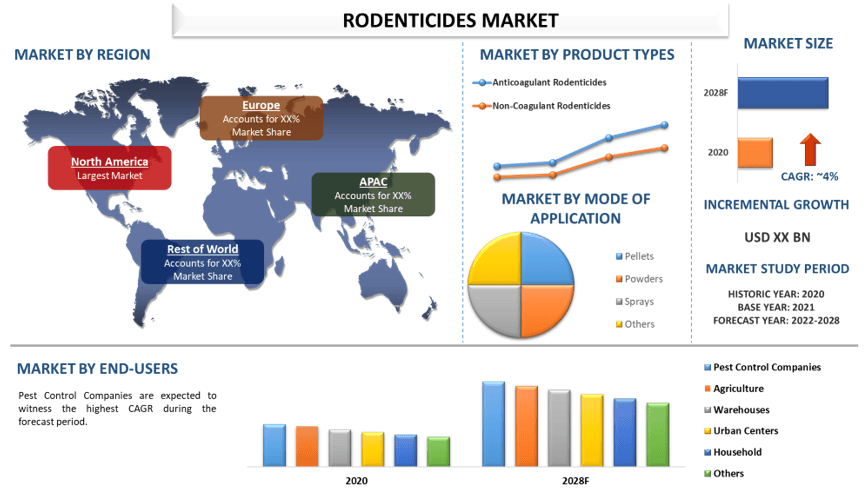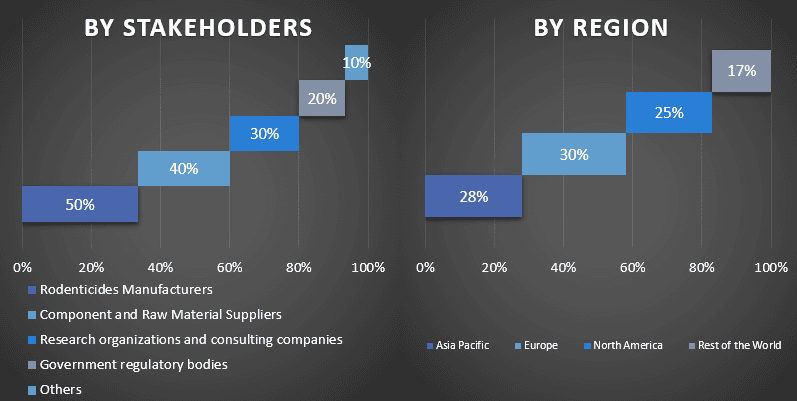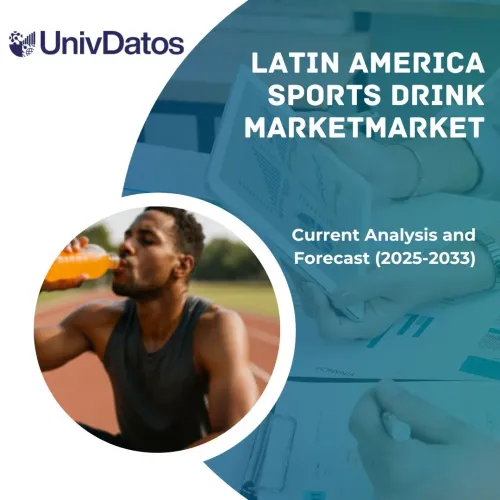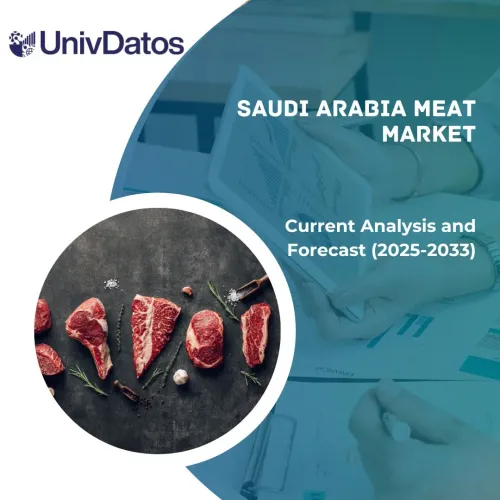Рынок родентицидов: текущий анализ и прогноз (2022-2028)
Акцент на типе продукции (Антикоагулянтные родентициды, Неантикоагулянтные родентициды); Способ применения (Гранулы, Порошки, Спреи, Другое); Конечные пользователи (Сельское хозяйство, Компании по борьбе с вредителями, Склады, Городские центры, Домохозяйства, Другое); Регион/Страна

Ожидается, что рынок родентицидов будет демонстрировать среднегодовой темп роста (CAGR) примерно 4% в период с 2022 по 2028 год. Родентициды - это пестициды, которые часто смешивают с такими ингредиентами, как арахисовое масло или патока, чтобы привлечь и убить грызунов, обитающих на сельскохозяйственных полях и складах. Как городские жители, так и фермеры должны бороться с проблемой заражения грызунами, поскольку это вредит как растущим культурам, так и жилым помещениям людей, снижает урожайность ферм и снижает цены на урожай. Во всем мире борьба с грызунами является серьезной проблемой общественного здравоохранения. Такие вредители, как крысы и мыши, уничтожают и загрязняют посевы, продукты питания на хранении, декоративные растения, коммерческую и жилую недвижимость, кабели и ирригационные трубы, а также наносят ущерб и распространяют болезни в лесном хозяйстве, питомниках и домашних хозяйствах. Для профилактического и лечебного лечения крысиных нашествий часто используются родентициды. Растущий спрос на родентициды можно объяснить ростом популяции грызунов, что является основным фактором, лежащим в основе растущей распространенности передающихся заболеваний, таких как чума, хантавирусная инфекция и лихорадка Ласса, которые, в свою очередь, влияют на человека и окружающую среду во всем мире. Например, по данным CDC, по состоянию на конец 2020 года в Соединенных Штатах было зарегистрировано 833 случая хантавирусной болезни. Все это были лабораторно подтвержденные случаи, включая ГЛС (HPS) и нелегочную хантавирусную инфекцию. Расширение жилых районов и предприятий, усиление давления на правительственные учреждения с целью поддержания стандартов гигиены, что приводит к росту спроса на родентициды, также будет способствовать росту рынка в предстоящий период. Кроме того, ожидается, что рынок родентицидов будет расти из-за увеличения загрязнения пищевых продуктов грызунами, а также из-за влияния изменения климата на внезапный рост популяции грызунов. Однако некоторые из ограничений на рынке, включая государственное регулирование и запрет на родентициды в некоторых развитых странах, сдерживают рост этого рынка во всем мире.
BASF SE, Bayer AG, Neogen Chemicals Ltd, PelGar International Ltd, Bell Laboratories Inc, Impex Europa S.L., EcoClear Products Inc, Syngenta Crop Protection AG, Liphatech, Inc, JT Eaton & Co.Inc - вот некоторые из ключевых игроков на рынке. Эти игроки предприняли несколько слияний и поглощений, а также партнерских отношений, чтобы предоставить клиентам высокотехнологичные и инновационные продукты/технологии.
Основные сведения, представленные в отчете
"Среди типов продуктов, на долю антикоагулянтных родентицидов приходилась большая часть рынка в 2020 году"
На основе типа продукта рынок родентицидов сегментируется на антикоагулянтные и неантикоагулянтные родентициды. На долю сегмента антикоагулянтных родентицидов приходилась значительная доля рынка, и, по оценкам, он будет быстро расти в течение прогнозируемого периода, поскольку он предотвращает свертывание крови. Грызуны, получающие приманки с антикоагулянтными родентицидами, умирают безболезненно и легко от внутреннего кровотечения. Кроме того, он менее токсичен для других животных, а также для людей. Этот тип пользуется высоким спросом в сельскохозяйственном секторе по всему миру, что способствует росту сегмента.
"Ожидается, что среди способов применения гранулы будут демонстрировать значительный среднегодовой темп роста (CAGR) в течение прогнозируемого периода"
На основе способа применения рынок разделен на гранулы, порошки, спреи и другие. Сегмент гранул захватил значительную долю рынка, и ожидается, что он будет расти со значительным среднегодовым темпом роста в течение прогнозируемого периода, поскольку гранулы привлекают большое количество грызунов благодаря своей семенообразной форме, что, в свою очередь, стимулирует рост сегмента. Кроме того, гранулы представляют собой очень вкусный состав, обладают превосходной приемлемостью и эффективным контролем при однократном кормлении, что, вероятно, будет способствовать росту сегмента.
"Ожидается, что среди конечных пользователей канал компаний по борьбе с вредителями будет демонстрировать значительный среднегодовой темп роста (CAGR) в течение прогнозируемого периода"
На основе конечных пользователей рынок сегментируется на сельское хозяйство, компании по борьбе с вредителями, склады, городские центры, домашние хозяйства и другие. На долю сегмента компаний по борьбе с вредителями приходилась значительная доля рынка, и, по оценкам, он будет быстро расти в течение прогнозируемого периода. Агентства по борьбе с вредителями подходят для уменьшения последствий чрезмерного и неправильного использования пестицидов, которые в большинстве случаев особенно чувствительны к окружающей среде. Кроме того, компании по борьбе с вредителями обеспечивают безопасность людей от токсичности и нецелевых атак нескольких родентицидов. Компании по борьбе с вредителями предоставляют услуги многим секторам, таким как дома, отели, розничные предприятия, офисные комплексы, предприятия пищевой промышленности, производственные предприятия, сельское хозяйство, склады, школы и электронные сектора.
"Ожидается, что Северная Америка продемонстрирует значительный рост в течение прогнозируемого периода"
Для лучшего понимания динамики рынка родентицидов был проведен подробный анализ по различным регионам мира, включая Северную Америку (США, Канада и остальная часть Северной Америки), Европу (Германия, Франция, Испания, Великобритания, Италия и остальная часть Европы), Азиатско-Тихоокеанский регион (Китай, Индия, Австралия, Япония и остальная часть АТР), остальной мир. Северная Америка представляет собой крупный рынок для индустрии родентицидов из-за увеличения популяции грызунов, а также увеличения количества продуктов и услуг по борьбе с грызунами.
Причины купить этот отчет:
- Исследование включает в себя анализ размеров рынка и прогнозирование, подтвержденный проверенными ключевыми экспертами отрасли.
- В отчете представлен краткий обзор общей производительности отрасли с первого взгляда.
- Отчет охватывает углубленный анализ видных представителей отрасли с основным упором на ключевые финансовые показатели бизнеса, портфель продуктов, стратегии расширения и последние разработки.
- Подробное изучение движущих сил, ограничений, ключевых тенденций и возможностей, преобладающих в отрасли.
- Исследование всесторонне охватывает рынок по различным сегментам.
- Углубленный анализ отрасли на региональном уровне.
Варианты настройки:
Глобальный рынок родентицидов может быть дополнительно настроен в соответствии с требованиями или любым другим сегментом рынка. Кроме того, UMI понимает, что у вас могут быть свои собственные потребности в бизнесе, поэтому не стесняйтесь обращаться к нам, чтобы получить отчет, который полностью соответствует вашим требованиям.
Содержание
Методология исследования для анализа глобального рынка родентицидов (2022–2028 гг.)
Анализ исторического рынка, оценка текущего рынка и прогнозирование будущего рынка глобального рынка родентицидов были тремя основными шагами, предпринятыми для создания и анализа внедрения родентицидов в основных регионах мира. Было проведено исчерпывающее вторичное исследование для сбора исторических данных о рынке и оценки текущего размера рынка. Во-вторых, для проверки этих выводов было принято во внимание множество результатов и предположений. Кроме того, были проведены исчерпывающие первичные интервью с отраслевыми экспертами по всей цепочке создания стоимости глобального рынка родентицидов. После предположения и проверки рыночных показателей посредством первичных интервью мы применили восходящий/нисходящий подход к прогнозированию общего размера рынка. После этого были приняты методы разбивки рынка и триангуляции данных для оценки и анализа размера рынка сегментов и подсегментов, к которым относится отрасль. Подробная методология описана ниже:
Анализ исторического размера рынка
Шаг 1: Углубленное изучение вторичных источников:
Было проведено подробное вторичное исследование для получения исторических данных о размере рынка родентицидов из внутренних источников компании, таких как годовой отчет и финансовая отчетность, презентации о деятельности, пресс-релизы и т. д., а также из внешних источников, включая журналы, новости и статьи, правительственные публикации, публикации конкурентов, отраслевые отчеты, сторонние базы данных и другие надежные публикации.
Шаг 2: Сегментация рынка:
После получения исторических данных о размере рынка родентицидов мы провели подробный вторичный анализ для сбора исторических данных о рынке и долях различных сегментов и подсегментов для основных регионов. Основные сегменты, включенные в отчет, включают тип продукта, способ применения и конечных пользователей. Был проведен дальнейший анализ на уровне страны для оценки общего внедрения моделей тестирования в этом регионе.
Шаг 3: Факторный анализ:
После получения исторических данных о размере рынка различных сегментов и подсегментов мы провели подробный факторный анализ для оценки текущего размера рынка родентицидов. Кроме того, мы провели факторный анализ с использованием зависимых и независимых переменных, таких как увеличение загрязнения пищевых продуктов грызунами и влияние изменения климата на внезапный рост популяции грызунов во всем мире. Был проведен тщательный анализ сценариев спроса и предложения с учетом ведущих партнерств, слияний и поглощений, расширения бизнеса и запуска продуктов в секторе рынка родентицидов по всему миру.
Оценка текущего размера рынка и прогноз
Определение текущего размера рынка: На основе действенных выводов, полученных из вышеуказанных 3 шагов, мы пришли к текущему размеру рынка, ключевым игрокам на глобальном рынке родентицидов и рыночным долям сегментов. Все необходимые процентные доли и разбивки рынка были определены с использованием вышеупомянутого вторичного подхода и были проверены посредством первичных интервью.
Оценка и прогнозирование: Для оценки и прогнозирования рынка различным факторам, включая движущие силы и тенденции, ограничения и возможности, доступные для заинтересованных сторон, были присвоены веса. После анализа этих факторов были применены соответствующие методы прогнозирования, то есть восходящий/нисходящий подход, чтобы получить прогноз рынка примерно на 2028 год для различных сегментов и подсегментов на основных рынках мира. Методология исследования, принятая для оценки размера рынка, включает в себя:
- Размер рынка отрасли с точки зрения выручки (в долларах США) и темпы внедрения рынка родентицидов на основных рынках внутри страны
- Все процентные доли, разбивки и подразделения рыночных сегментов и подсегментов
- Ключевые игроки на глобальном рынке родентицидов с точки зрения предлагаемых решений. Кроме того, стратегии роста, принятые этими игроками для конкуренции на быстрорастущем рынке
Подтверждение размера рынка и доли
Первичное исследование: Были проведены углубленные интервью с ключевыми лидерами мнений (KOL), включая руководителей высшего звена (CXO/вице-президенты, руководители отделов продаж, руководители отделов маркетинга, руководители операционных отделов и региональные руководители, руководители стран и т. д.) в основных регионах. Затем результаты первичного исследования были обобщены, и был проведен статистический анализ для доказательства заявленной гипотезы. Информация, полученная в результате первичного исследования, была консолидирована с результатами вторичного исследования, что превратило информацию в полезные выводы.
Разделение первичных участников по различным регионам

Инжиниринг рынка
Метод триангуляции данных был использован для завершения общей оценки рынка и получения точных статистических данных по каждому сегменту и подсегменту глобального рынка родентицидов. Данные были разделены на несколько сегментов и подсегментов после изучения различных параметров и тенденций в областях типа продукта, способа применения и конечных пользователей на глобальном рынке родентицидов.
Основная цель исследования глобального рынка родентицидов
В исследовании были точно определены текущие и будущие рыночные тенденции глобального рынка родентицидов. Инвесторы могут получить стратегическую информацию, чтобы обосновать свое усмотрение в отношении инвестиций на основе качественного и количественного анализа, проведенного в исследовании. Текущие и будущие рыночные тенденции определяли общую привлекательность рынка на региональном уровне, предоставляя промышленному участнику платформу для использования неиспользованного рынка, чтобы получить выгоду в качестве преимущества первопроходца. Другие количественные цели исследований включают в себя:
- Анализ текущего и прогнозируемого размера рынка родентицидов в стоимостном выражении (в долларах США). Кроме того, анализ текущего и прогнозируемого размера рынка различных сегментов и подсегментов
- Сегменты в исследовании включают области типа продукта, способа применения и конечных пользователей.
- Определение и анализ нормативно-правовой базы для индустрии рынка родентицидов.
- Анализ цепочки создания стоимости с участием различных посредников, а также анализ поведения клиентов и конкурентов в отрасли.
- Анализ текущего и прогнозируемого размера рынка родентицидов для основного региона.
- Основные страны регионов, изучаемые в отчете, включают Азиатско-Тихоокеанский регион, Европу, Северную Америку и остальной мир.
- Профили компаний рынка родентицидов и стратегии роста, принятые участниками рынка для поддержания устойчивости на быстрорастущем рынке
- Углубленный анализ отрасли на региональном уровне
Связанные Отчеты
Клиенты, купившие этот товар, также купили










